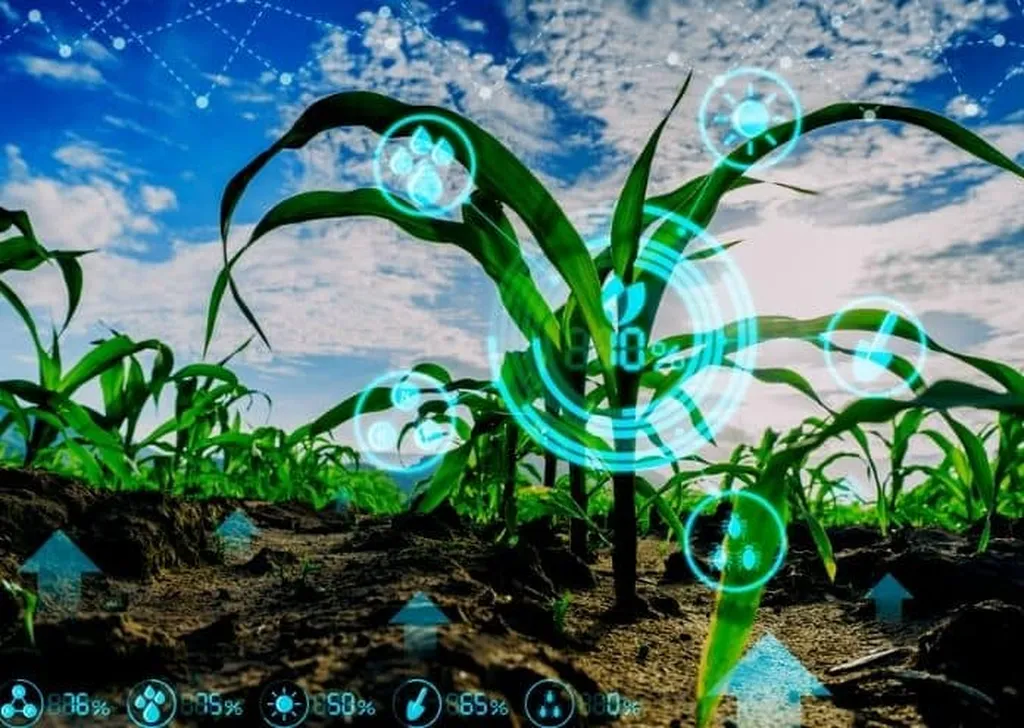In the heart of Punjab, India, researchers at Chitkara University Institute of Engineering and Technology are pioneering a smart intercropping system that could revolutionize precision agriculture. Led by S. B. Goyal, the team has developed an intelligent framework that combines hyperspectral imaging with hybrid deep learning models to detect leaf diseases in intercropping systems with remarkable accuracy. This innovative approach promises to enhance crop yield, sustainability, and efficiency, addressing critical challenges in modern agriculture.
The global population is growing rapidly, and with it, the demand for sustainable agricultural solutions. Intercropping, a practice that involves growing two or more crops in proximity, has gained prominence for its ability to promote land use efficiency and create a favorable environment for crop development. However, disease management in intercropping systems remains complex due to the potential for cross-infection and overlapping disease symptoms among crops. Early and precise disease recognition is therefore critical for sustaining crop condition and efficiency.
The research, published in the journal ‘Frontiers in Plant Science’ (translated to English as ‘Frontiers in Plant Science’), introduces a novel framework for early leaf disease detection. Hyperspectral imaging captures intricate biochemical and structural variations in crops like maize, soybean, pea, and cucumber—subtle markers of disease that are otherwise imperceptible. These images enable accurate identification of diseases such as rust, leaf spot, and complex co-infections.
To refine disease region segmentation and improve detection accuracy, the proposed model employs the synergistic swarm optimization (SSO) algorithm. A phase attention fusion network (PANet) is utilized for deep feature extraction, minimizing false detection rates. Furthermore, a dual-stage Kepler optimization (DSKO) algorithm addresses the challenge of high-dimensional data by choosing the most applicable landscapes. The disease classification is performed using a random deep convolutional neural network (R-DCNN).
Experimental evaluations were conducted using publicly available hyperspectral datasets for maize–soybean and pea–cucumber intercropping systems. The suggested ideal attained remarkable organization accuracies of 99.676% and 99.538% for the respective intercropping systems, demonstrating its potential as a robust, non-invasive tool for smart, sustainable agriculture.
“This research represents a significant step forward in precision agriculture,” said Goyal. “By leveraging advanced technologies like hyperspectral imaging and deep learning, we can detect diseases at an early stage, preventing crop loss and enhancing overall agricultural productivity.”
The implications of this research are far-reaching. For farmers, this technology offers a non-invasive, accurate, and efficient way to monitor crop health, leading to better decision-making and improved yields. For the agricultural industry, it opens up new avenues for sustainable practices and resource optimization. For the energy sector, the enhanced efficiency and productivity in agriculture can contribute to a more stable and sustainable food supply chain, which is crucial for energy security and economic stability.
As the world grapples with the challenges of climate change and food security, innovations like this smart intercropping system offer a beacon of hope. By integrating cutting-edge technology with traditional agricultural practices, researchers are paving the way for a more sustainable and efficient future.
“This is not just about detecting diseases; it’s about creating a smarter, more resilient agricultural system,” Goyal added. “It’s about ensuring that we can feed the growing population without compromising our environment.”
The research by Goyal and his team at Chitkara University Institute of Engineering and Technology is a testament to the power of innovation in addressing global challenges. As we look to the future, the integration of technology and agriculture will undoubtedly play a pivotal role in shaping a sustainable and prosperous world.

